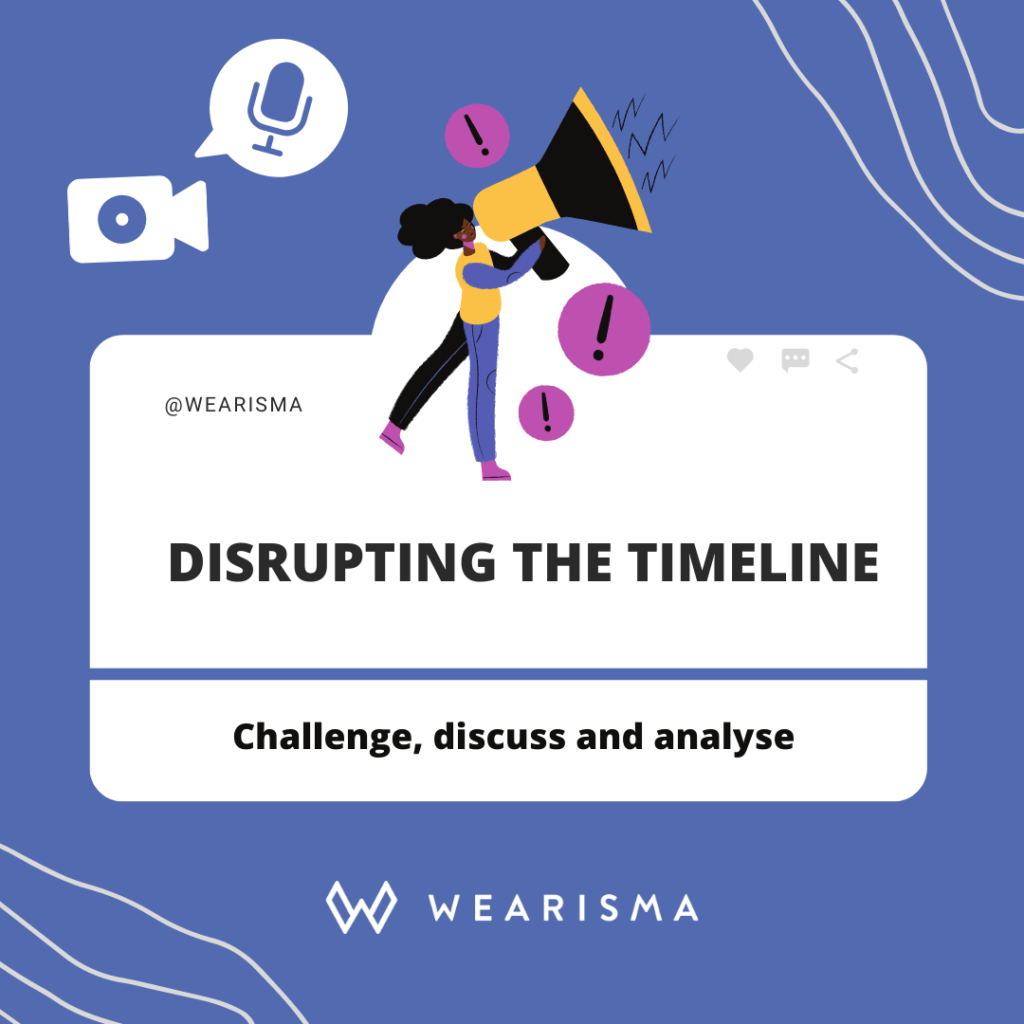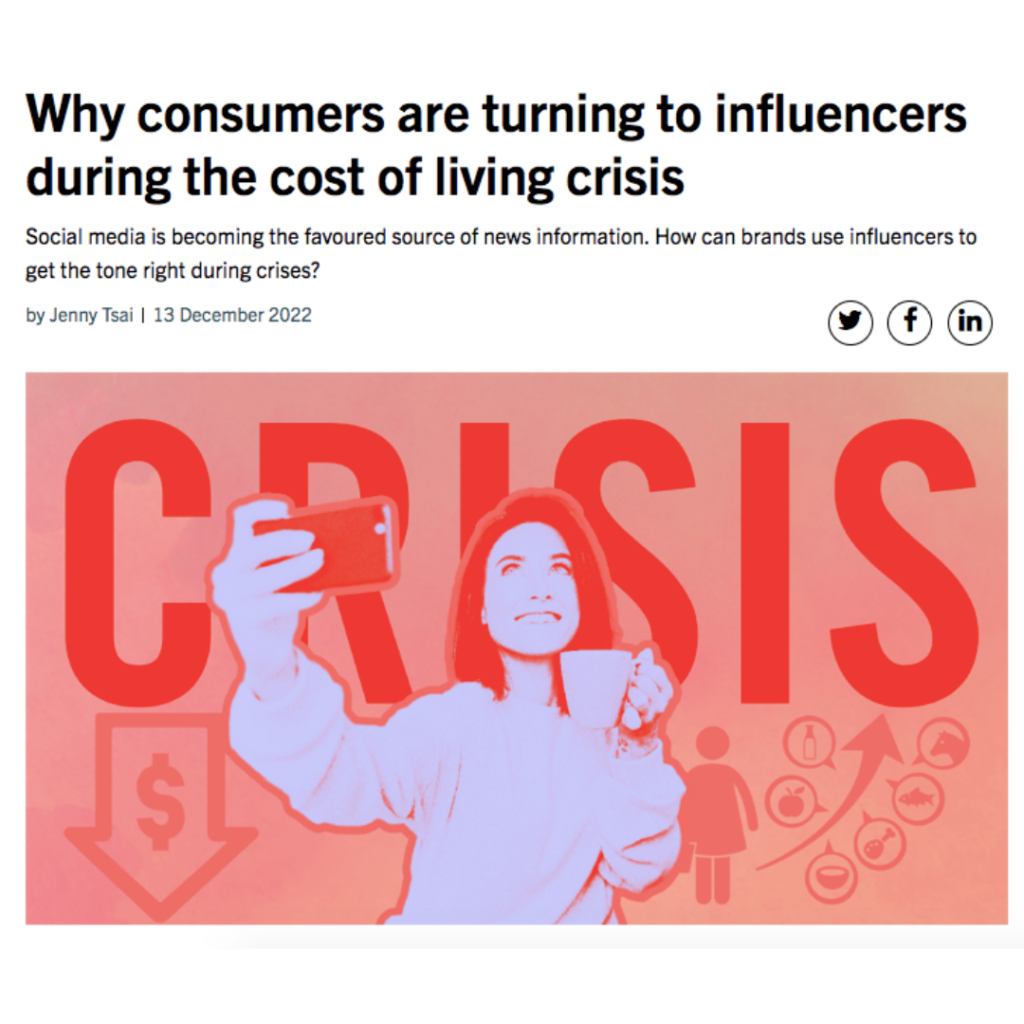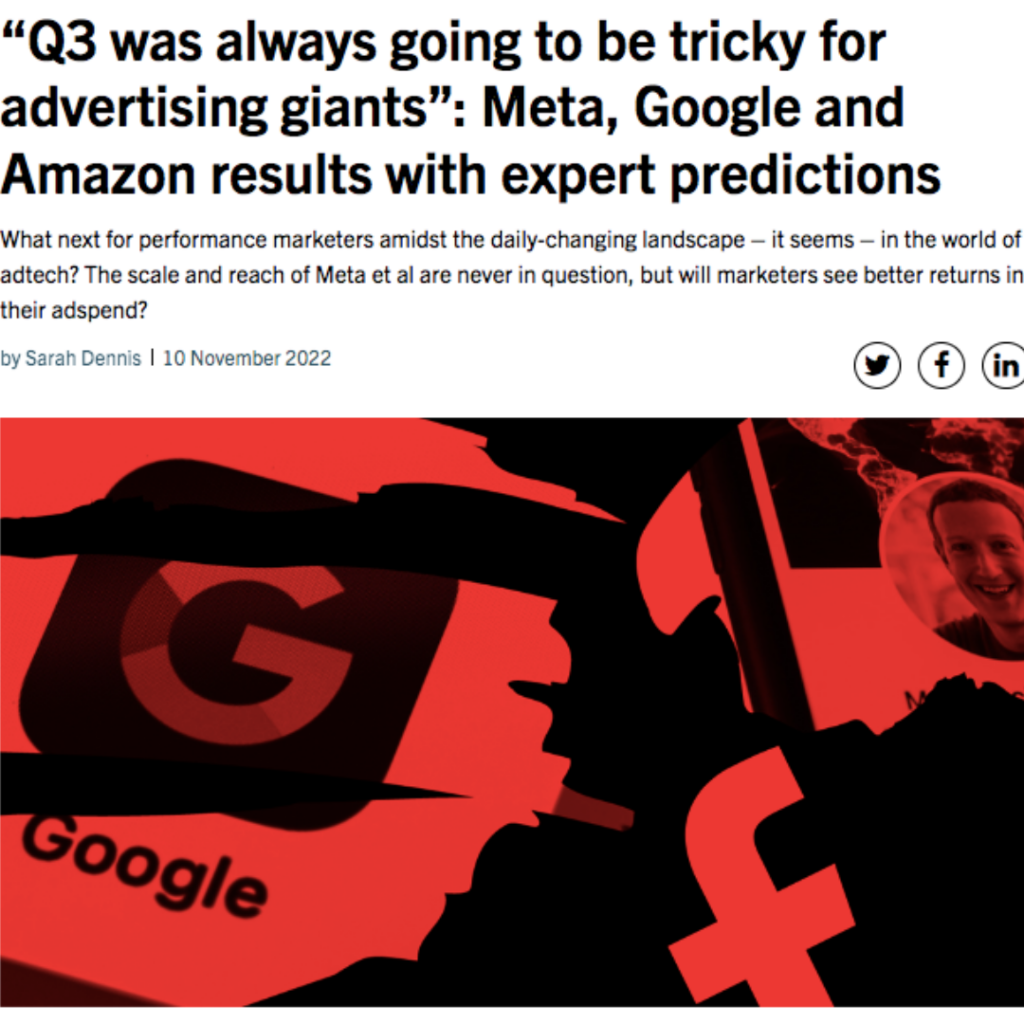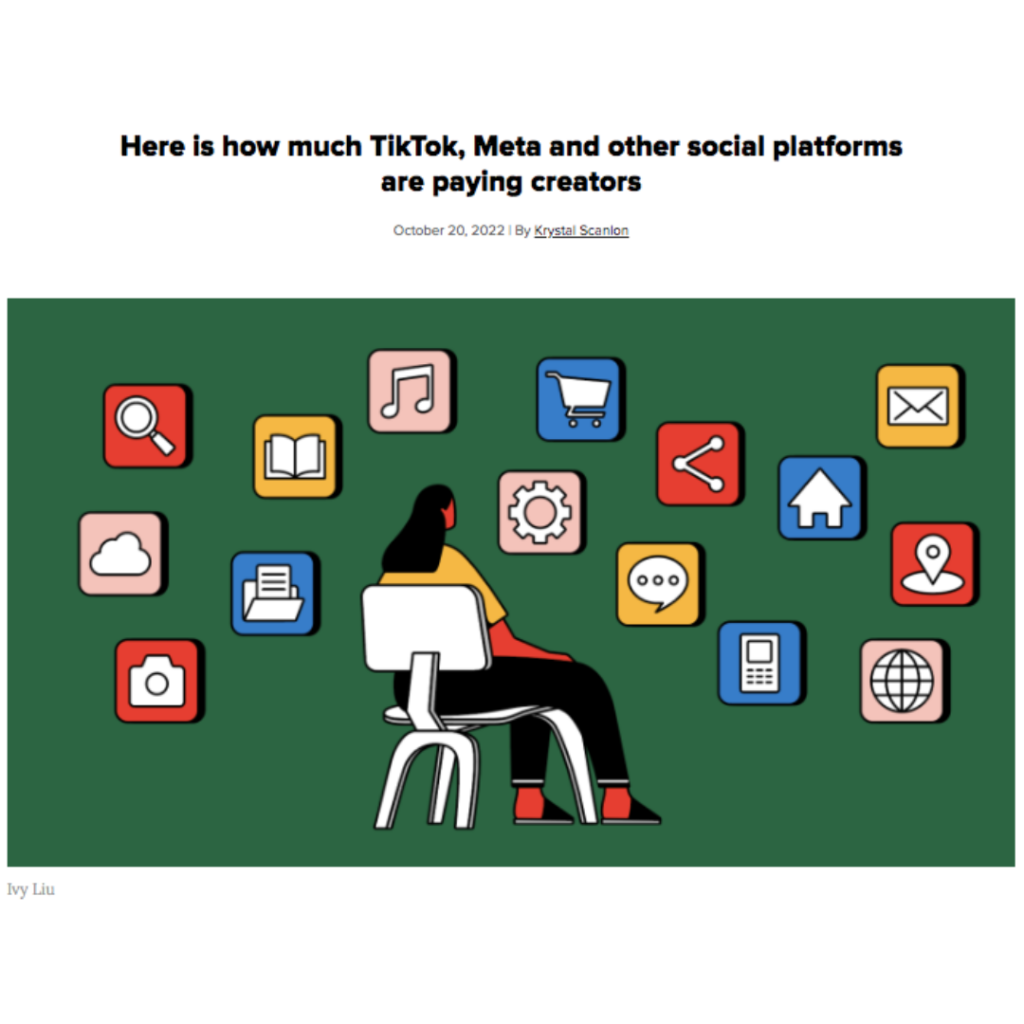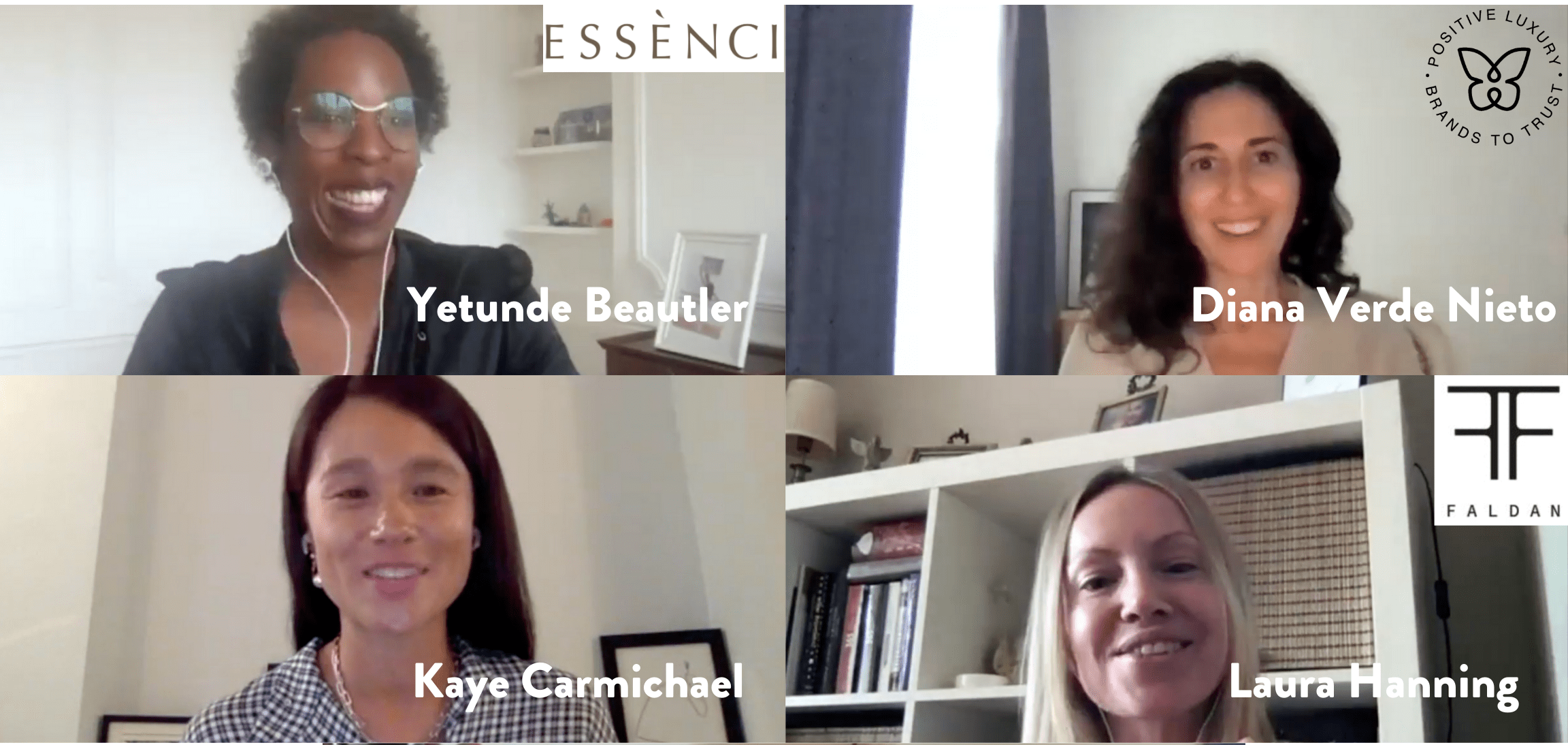
Disrupting the Timeline E02: ‘The Business of Sustainability’
We’re so excited to be sharing the second installment of Wearisma’s new video podcast series ‘Disrupting the Timeline’, with this week’s discussion focussing on ‘The Business of Sustainability’.
Wearisma’s CEO and Founder Jenny Tsai is joined by a fantastic cohort of guest speakers: Diana Verde Nieto, Co-Founder, and CEO of Positive Luxury, Kaye Carmichael, luxury and fashion marketing consultant, Laura Hanning, Founder of Faldan, and Yetunde Beutler Co-Founder of Essènci.
Key topics discussed:
- How to navigate the business of sustainability
- How to maintain authenticity as well as your bottom line
- How to successfully target consumers in the current climate
You can find a rundown of the highlights below but make sure you check out the full video on our Youtube Channel or listen in via Spotify or Soundcloud.
COVID has added fuel to the fire of our conversations surrounding sustainability. While the discussion is by no means a new topic of conversation, additional time at home has resulted in many rethinking their consumption habits and which brands they are supporting by buying their products.
On this episode, sustainability pioneers across different markets discuss their personal experience with leading and navigating companies that have sustainability at the core of their DNA as well as giving their opinions and advice on how companies can effectively incorporate sustainability into their business models.
Authenticity and brand values was a recurring theme amongst our guest speakers, who pinned this as the key to growing a business post-covid as consumers begin expecting a more personal and involved shopping experience. Community is the new buzz word in marketing and sharing of sustainable practices and a company’s philosophy is something all of our guest speakers agreed on and spoke about at length.
For more advice and highlights from the conversation see our round-up below.
Jenny: Thanks so much for joining me today. I’m very excited to get stuck into this conversation. I’m going to start with you Diana and kick off this conversation discussing Positive Luxury and its efforts to help luxury brands demonstrate a positive social and environmental impact. What was your motivation behind co-founding positive luxury?
Diana: What we wanted to do with Positive Luxury is to democratize the language of sustainability, to make it accessible to people, and for people, at a click, to be able to understand what companies do. In a nutshell, the motivation is to make this very simple to consumers. When you’re going to make the decision to vote with your money, put it in brands that actually are investing in the things that you care about, because brands today have the responsibility to care about our world because governments are not going to solve this problem for us. This agenda is more important than it ever has been before, especially now during COVID.
Jenny: So, you described the Butterfly Mark that authenticates the positive impact of luxury brands, why do you think it’s now becoming increasingly important for brands to validate their sustainability practices?
Diana: The big change is the fact that pre-covid we have seen sustainability as being something that is incredibly important for people within the organisation but mainly came from the bottom up, the passionate young- or not so young- people that really wanted to make a difference. During COVID we have seen is a massive shift for this to be a leadership agenda. The CEO and the board have taken into account sustainability in terms of the innovation of the business going forward.
The second point is the investment community has really woken up to the fact that companies that invest today are mitigating the risk of climate change in the future and internalising the externalities that sustainability as a whole brings. They will be much more resilient in the future. This is not just about a manifesto or something nice that you keep somewhere on a wall, this is about activating sustainability throughout the organisation, linking it to your payments, into your salary receipts, into your bonuses, and actually looking at how everyone in the organisation is working towards the goal that the organisation wants to achieve. These goals are beyond profits. It’s about how you can have a regenerative business model and how you make sure you capture your emissions.

Jenny: Yetunde and Laura, as you create these sustainable brands how do you think about approaching consumers and bringing them into your journey and the vision that you have?
Laura: During COVID I realised the power influencers have. People listen to other people. Having all the information is less important than engaging in a discussion on more ethical and conscious consumerism and lifestyle. Sometimes it’s more effective to talk about the lifestyle and the philosophy rather than directly going down the whole list of materials and how we’re making things. People engage a little bit more when you say “you know what, instead of having ten cheap bags, why don’t you save and have one.”
Yetunde: One of the things that can be effective and that can help build a community is being as authentic as you possibly can and showing the real aspects of life. Instead of saying “we’re sustainable” talking about the values, telling the story, and talking about the lifestyle. You’ll connect on an emotional level and you’ll be able to get more clients to go on your journey with you.

Jenny: What are your thoughts in terms of marketing sustainable products whilst staying authentic?
Kaye: There is an audience that is engaging more and more with sustainability, it’s finally on everyone’s radar. As you said, Wearisma data has shown that engagement on social is really driving that change. That’s really optimistic and really hopeful. It’s about ensuring that your brand’s communication is authentic and consistent with your values, but also, as Laura said, people want to buy products that are beautiful and desirable and it should be automatic that it is produced in an ethical, responsible, sustainable way. Consumers are bombarded with choice now, and they’re going to connect with your brand based around your values and your consistency with those values.
Jenny: Diana what are your thoughts with the brands you work with- how can brands capitalise on this grand swell of interest whilst staying authentic?
Keep up with the conversation by subscribing to our newsletter
Diana: What brands need to start doing is what you guys talked about: what is your purpose beyond the bag, beyond the skincare, beyond what you do. What we are looking at is this notion of positive impact. What are you putting back, that gives you a license to operate in this world. Leadership has started to realise that unless they think in this way they will not have a business. It’s about leapfrogging to the future, it’s about innovation. Let’s not think about this linear thing of “ok we need to do this, this and this”, it’s about “ok if in ten years time we know that climate change will be affecting these regions of the world and we know that biodiversity is in decline, what can we do in order not to get to 2030 being totally dependent on a supply chain that we will not be able to fulfill”. Now there is a real business case for sustainability and if you don’t do it you will miss out profit-wise.
Jenny: How do you think, in terms of your final link on investment and better profitability, how are people making this business case at the moment?
Diana: It’s not about buying less it’s perhaps not buying at all. This doesn’t mean you will not have access to the product, it’s thinking about different business models. For example, you lease the bag. The linear way of commerce is not going to be able to be fulfilled with the scenario of 8 billion people on this planet consuming at the rate that we are all consuming. We have to be innovative in terms of how we can access the things that we love with pride.

Kaye: From the fashion industry perspective there are some fundamentals in the system that are actually crazy in terms of the amount of production vs. the amount that is actually sold. Something like 60% of items are sold at their full price and then the rest is sold at off-price or disposed of. All of this excess that’s constantly being produced when it’s not actually needed or wanted by anybody. If the business models can shift so they’re actually getting the value out of selling something at the full price or reviewing what is the appropriate price for a product. These kinds of shifts within the industry, as well as looking at circularity models and how we can change into rental options, will help the industry ease its impact on the environment.
The bigger brands are trapped in this fear of this conversation about sustainability because they’re not sustainable full stop. Trying to move into that conversation, particularly with today’s consumer who has access to social media, can research and find out everything about your brand. They need to be open to that two-way conversations and be honest about it. It’s better to be moving in the right direction than not doing anything. It’s important being open to debate and then really learning and listening to your customers about what’s important to them.

Yetunde: Just to comment on that. I think that large brands and companies are being forced to do that by their consumers, specifically because you have so much on social media that if they don’t do that if they do try to hide, people will find out, and when the consumer finds out it can be drastic to their bottom line. As companies are thinking more along the line of risk control they’re being forced into that, even if they don’t want to do it, it’s happening because the risk of continuing the same behaviour as the past is too risky.
For me I believe that, first of all, globally, consumers are ready for sustainable product. It’s not about consuming consuming consuming, it’s more about quality over quantity. How you market your sustainable products, and the questions you ask yourself as a brand, as to what aspect of our brand or product should we communicate is dictated by the age of the person. Someone who’s 20 is going to be looking for something different than a 30 year old. That’s really key in communication.
Laura: The reality is that it is very expensive to be sustainable. The options are there but when you put it all together you no longer make a sensible traditional business case. Then your only option becomes direct to consumer, that is our reality today because we are not making the margins. There is a lot of discussion about innovation and materials, but the relationship between brands and retailers is such a pandora’s box which requires a lot of debate still.
We’d love to hear your thoughts on our new series, keep up the conversation by subscribing to our newsletter
